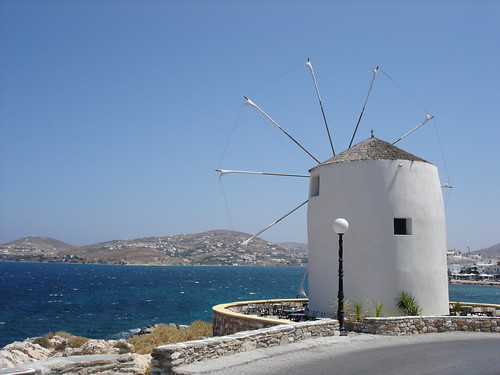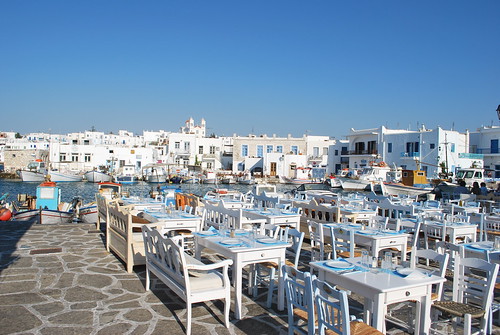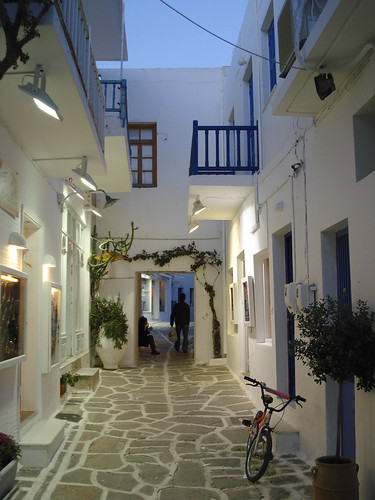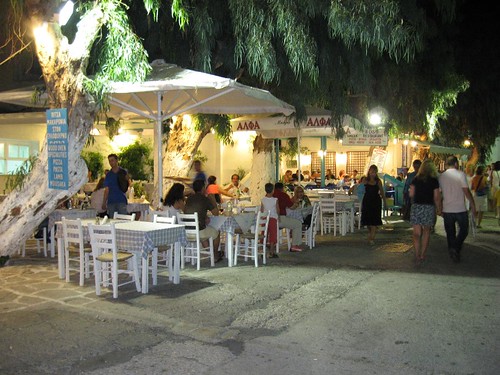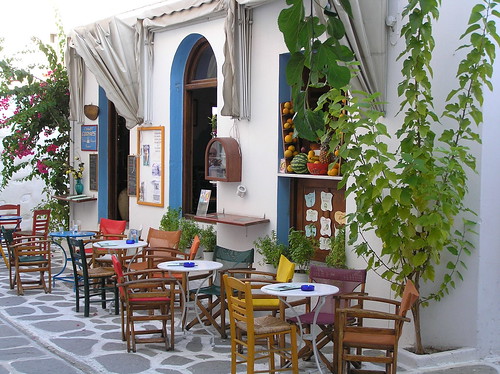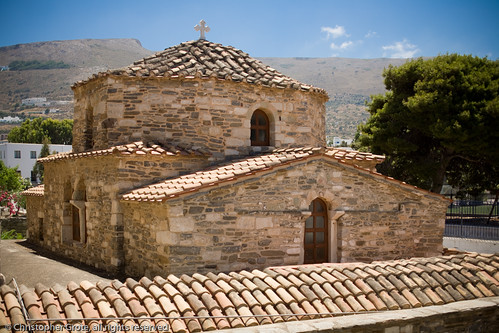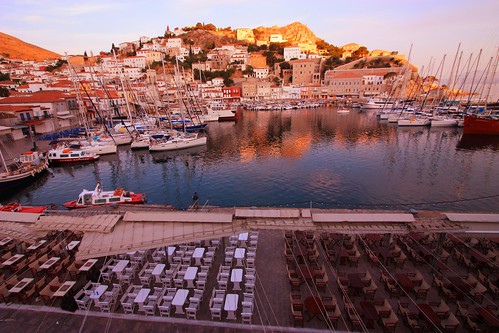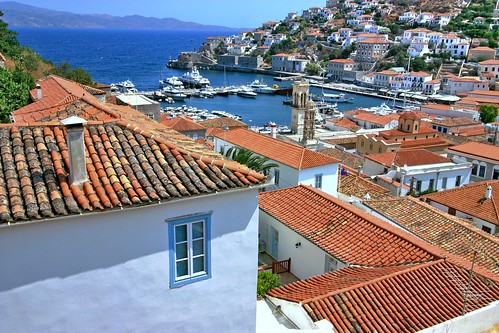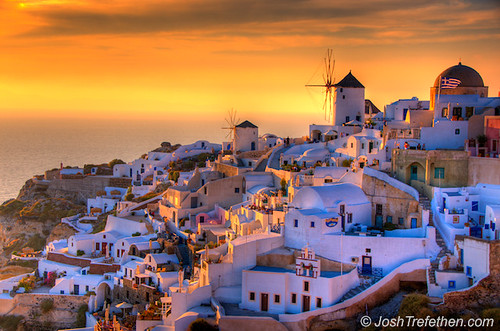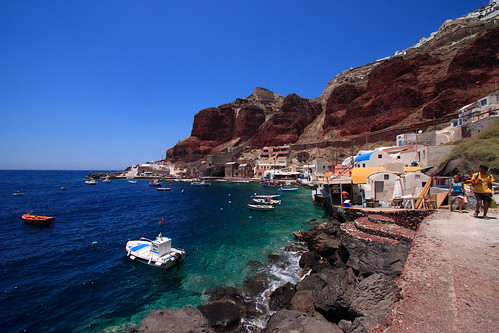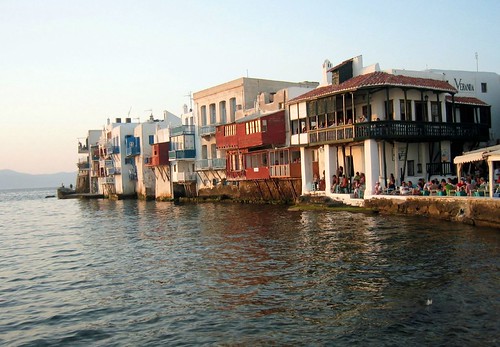
Mykonos Hora - Little Venice by wallyg
Mykonos (Greek: Μύκονος) is a Greek island and a tourist destination, renowned for its cosmopolitan character and its pure nightlife. The island is conception of the Cyclades, lying between Tinos, Siros, Paros and Naxos. It spans an area of 105.183 km2 (41 sq mi) and rises at an elevation of 341 m (1,119 ft) at its highest point. The island is composed primarily of granite. It has lowercase natural fresh liquid and relies on the desalination of sea liquid in order to meet its needs. There are 9,320 inhabitants (2001) most of whom live in the maximal town, Mykonos, also known as Chora (i.e. the Town in Greek, a ordinary denomination in Greece when the study of the island itself is the same as the study of the principal town), which lies on the westerly coast. It is believed that the island was named after a local hero, who is thoughtful an brute of the simulacrum Apollo and was worshipped locally in antiquity.

House in Mykonos by csrobe
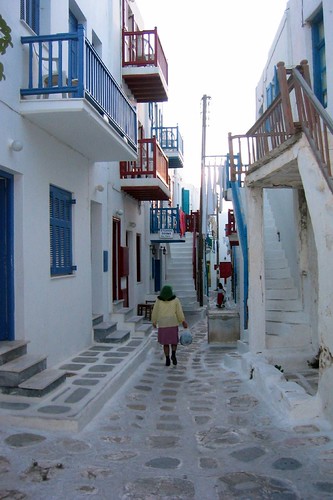
Mykonos Hora: Streets of Myknos by wallyg
Archaeological finds indicate that the Ionians settled on Mykonos in the primeval part of the 11th century BC. More past discoveries have bare remnants in Ftelia beach from the period Kares tribe dating backwards to as far as 3000 BC. In Greek mythology Mykonos was the location of the battle between Zeus and the Titan, and the island was named in honor of Apollo's grandson Mykons. During these ancient times, Mykonos, due to its proximity to the then highly populated island of Delos (situated about 2 km away), became rattling important as a supply island and possibly as a getaway location for Delian citizens.
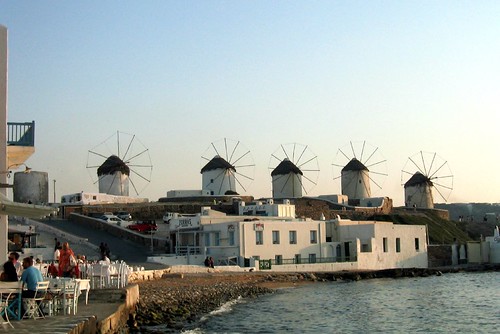
Mykonos Hora: Windmills by wallyg
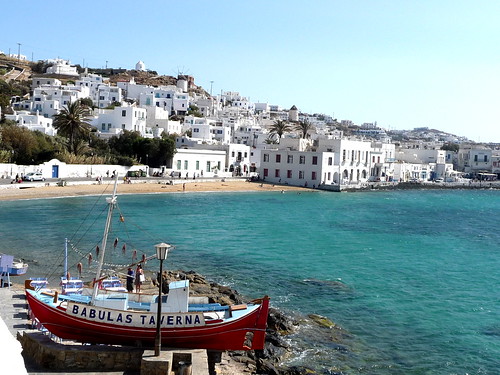
Hora by Barbara Campelli (on the moon)
Today, Mykonos is one of the most cosmopolitan islands in Greece, having become increasingly popular with mass tourism. It is known for its diverse and intense nightlife as evidenced by a vast number of bars and nightclubs. Mykonos is also known for its sandy beaches.
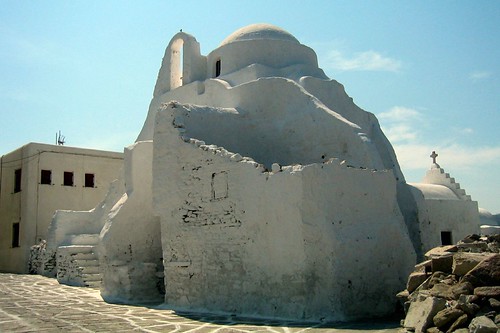
Mykonos Hora: Church of Paraportiani by wallyg
The nightlife of Mykonos is marketed as among the best in Europe. Mykonos also attracts famous DJs to its renowned clubs and beach bars. In addition, Mykonos is a gay-friendly resort area, featuring several gay clubs open during the summer.Mykonos nightlife focuses mainly on bars rather than clubs, yet a number of notable clubs can be found throughout the island.
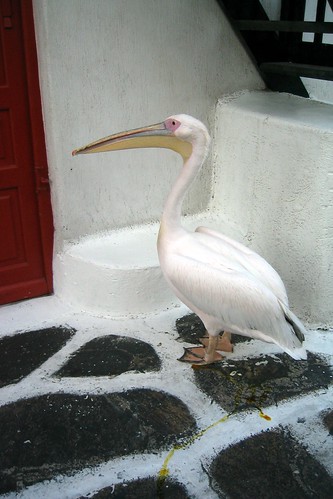
Greece - Mykonos Hora: Petros the Pelican by wallyg
Petros the Pelican has been the island's official mascot for 5 decades
